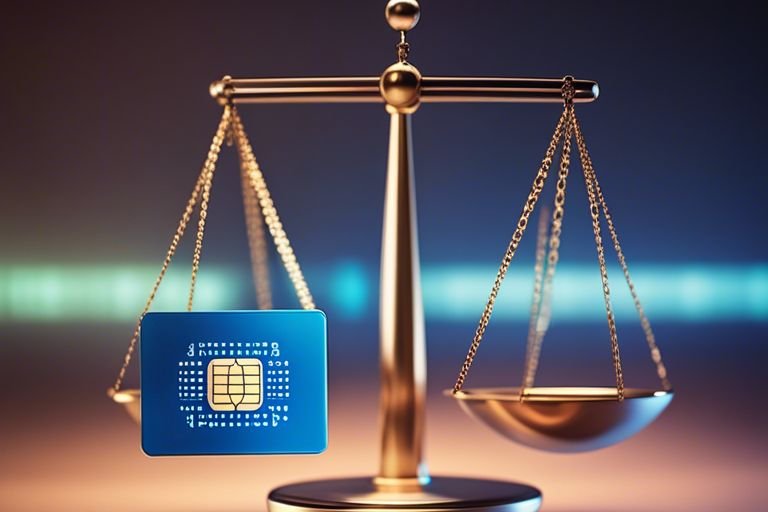
Device connectivity has evolved with the introduction of eSIM technology, but how does it stack up against traditional SIM cards? Understanding the differences between these two options is necessary in selecting the right choice for your device. In this comprehensive guide, we examine into the intricacies of eSIM and SIM cards, shedding light on their functionalities, advantages, and potential limitations to help you make an informed decision.
What is an eSIM?
Definition and History
What exactly is an eSIM? An eSIM, short for embedded SIM, is a small chip embedded in your device that serves the same purpose as a traditional SIM card. The history of eSIM dates back to 2010 when the concept was first introduced by the GSMA, the organization that represents the interests of mobile operators worldwide.
How eSIM Works
eSIM works by storing multiple network profiles on the embedded chip, allowing users to switch between different carriers without needing to physically remove or swap out a SIM card. This flexibility is particularly useful for those who travel frequently or want the convenience of easily changing carriers without the hassle of dealing with physical cards.
Another advantage of eSIM technology is its capability to support multiple devices simultaneously. Users can have a single eSIM profile that works across various gadgets such as smartphones, smartwatches, and tablets, making it a versatile and efficient option for modern connectivity needs.
What is a SIM Card?
Definition and History
One of the most common features in mobile devices today is the Subscriber Identity Module (SIM) card. This tiny, removable card securely stores the subscriber’s information, such as phone number, contacts, and text messages. SIM cards were first introduced in the early 1990s and quickly became a standard in mobile technology.
How SIM Cards Work
One of the fascinating aspects of SIM cards is how they work to authenticate and identify users on a mobile network. When inserted into a device, the SIM card communicates with the network to establish the user’s identity. This process enables users to make calls, send messages, and access data services.
A SIM card also contains a unique identification number (ICCID) and a security key, which encrypts communication between the device and the network. This encryption ensures that sensitive information remains secure and private while using mobile services. The SIM card plays a crucial role in enabling seamless connectivity and ensuring the security of mobile communications.
eSIM vs. SIM Card: Key Differences
Compatibility and Availability
Availability is a significant factor when considering eSIM vs. SIM card. Traditional SIM cards are widely available and can be easily swapped between devices. On the other hand, eSIM technology is still catching up in terms of compatibility with all devices and global networks. While eSIM provides greater flexibility in terms of switching carriers without changing physical cards, its availability is still limited in comparison to traditional SIM cards.
Security and Authentication
An important aspect to consider when comparing eSIM vs. SIM card is security and authentication. SIM cards are physical and require insertion into a device, making them less vulnerable to hacking or remote access. In contrast, eSIMs are embedded in the device, posing potential security risks if not properly protected. However, eSIM technology offers features like remote provisioning and secure profiles, enhancing authentication protocols compared to traditional SIM cards.
Choosing the Right Option for Your Device
Factors to Consider
Many factors come into play when deciding between an eSIM and a traditional SIM card for your device. To make the right choice, consider these crucial factors:
- Compatibility with your device
- Cost and convenience of activation
- Flexibility for switching between carriers
- Security and remote management capabilities
Recognizing these factors will help you make an informed decision that best suits your needs.
Pros and Cons of Each
To weigh the pros and cons of eSIMs and SIM cards, let’s explore into the advantages and disadvantages of each option.
Pros and Cons of eSIMs and SIM Cards
| eSIMs | SIM Cards |
|---|---|
| Convenient for international travel | Widespread compatibility |
| Remote SIM provisioning | Easy to swap between devices |
| Less physical space required | Accessible worldwide |
Right at the outset, it’s vital to understand the advantages and disadvantages of eSIMs and SIM cards before making a decision that aligns with your preferences and requirements.
Factors to Consider
Factors such as compatibility, cost, flexibility, and security play a vital role in determining the best option for your device. By carefully evaluating these factors, you can make an informed choice that caters to your specific needs and preferences.
Final Words
On the whole, whether to choose an eSIM or a traditional SIM card for your device depends on your individual needs and preferences. If you value convenience, flexibility, and international travel, an eSIM might be the better option for you. However, if you prefer keeping things simple and are not a frequent traveler, sticking with a traditional SIM card could be the way to go. Both options have their pros and cons, so it’s imperative to weigh them carefully before making a decision.
